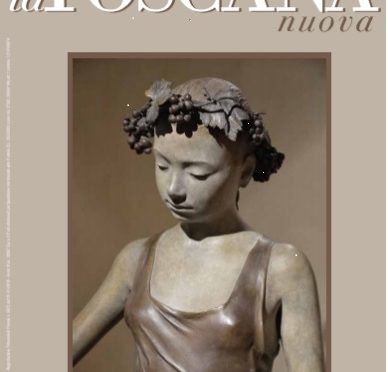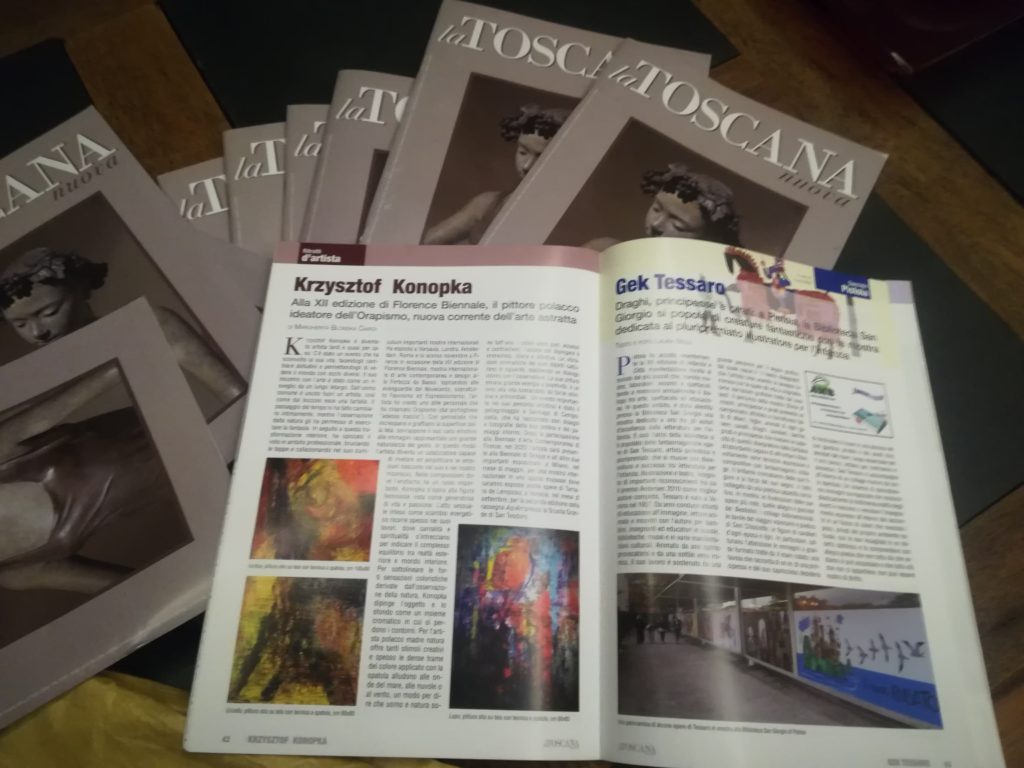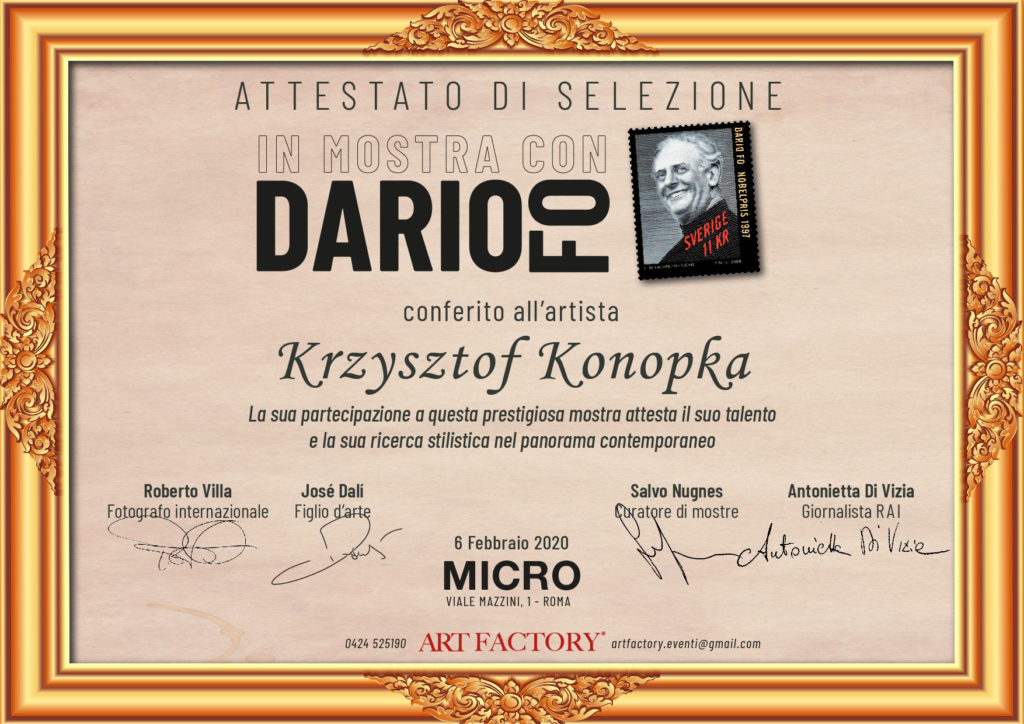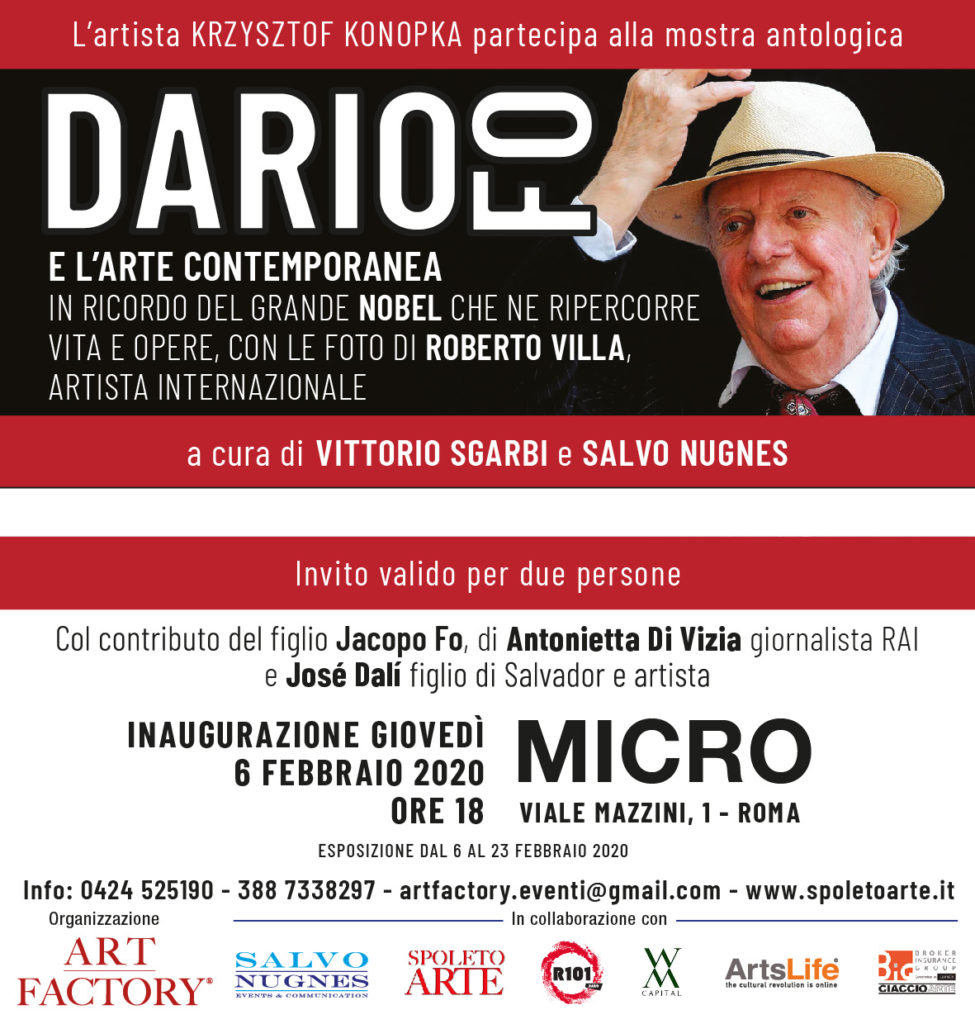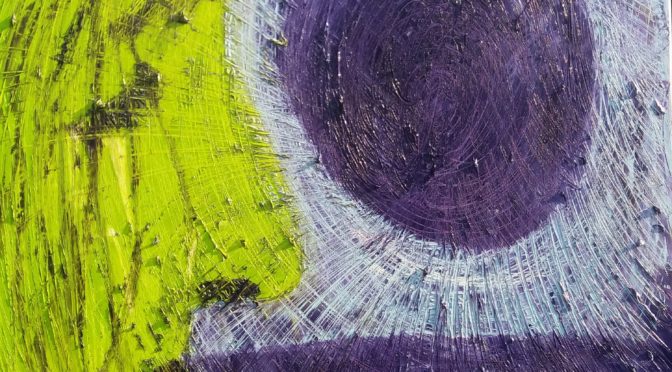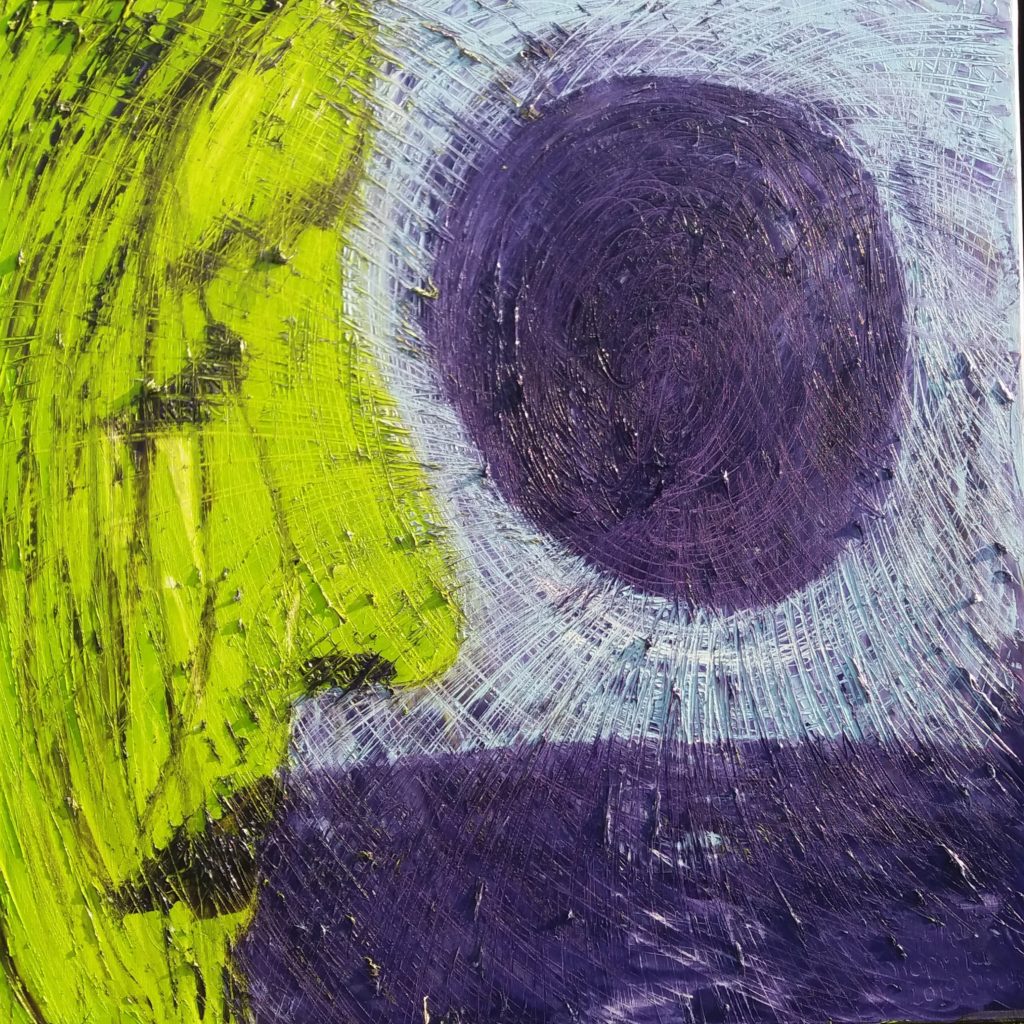Krzysztof Konopka è diventato artista tardi e quasi per caso. Un evento di forte disagio ,che ha sconvolto la sua vita, ha fatto cambiare le sue abitudini personali e ha permesso di vedere il mondo con gli occhi d’artista. Il suo incontro con l’arte è stato come un risveglio da un lungo letargo. In seguito alla sua trasformazione personale ha spiccato un volo in alto nella ricerca professionale , bruciando le tappe e collezionando presto nel suo curriculum importanti mostre internazionali. Esponeva senza sosta prima a Varsavia, poi a Londra, Amsterdam , Roma e Firenze. Il suo approccio con la pittura riprende le avanguardie del novecento come favismo ed espressionismo per trasformarle creando uno stile personale che l’artista ha chiamato orapizmo. Con spatolate spontanee che increspano e graffiano la superficie della tela, sovrappone il suo caos emotivo alle immagini rappresentate, trasmettendo la freschezza e naturalezza del suo gesto. In questo modo l’artista diventa un conduttore e catalizzatore – un mezzo per rivelare ed amplificare le nostre emozioni nascoste nell’inconscio. Tira fuori le sue e nostre sensazioni primordiali catturandole nel suo groviglio di colori e fatture da diverse trame. Il mondo reale è sempre punto di partenza per le sue opere, ma la visione viene trasformata attraverso l’azione di cromatiche sovrapposizioni. Spesso Konopka si ispira alla figura femminile ,nelle composizioni dove l’erotismo ha un ruolo importante, ma nello stesso momento sottolinea le forti sensazioni coloristiche ispirate dalla natura , presentando l’oggetto dipinto e il suo sfondo come un insieme di colore dove si perde il contorno. Per l’artista polacco la madre natura offre tanti stimoli creativi e spesso le dense trame del colore, messo con la spatola su tela alludono alle onde del mare, movimento del vento o delle nuvole. Grazie a questa tecnica lo spettatore riceve un messaggio della stretta appartenenza dell’uomo come specie all’ambiente. Uomo e natura sono tutt’uno. Attraverso la particolare tecnica dettata dall’azione artistica di tipo immediato – art action, la sua pittura ottiene effetto di bassorilievo di colore dall’aspetto orrifico tipico dell’ arte primitiva,. Come nel Favismo i colori sono puri , accessi e contrastanti , però la loro consistenza è diversa e nell’altra fase di lavoro viene aggiunto il movimento . I suoi quadri sono come la natura che emana l’energia e pulsa di vita. L’azione di dipingere è immediata e rappresenta un momento della selvaggia liberazione dell’artista. Questa sensazione viene letta nelle sue opere e ricevuta dallo spettatore . La citazione figurativa dei soggetti si perde sotto dense trame sovrapposte dai colori sgargianti e contrastanti. Diverse opere di Krzysztof Konopka assomigliano la produzione artistica di Kooning , perdendo però successivamente la nettezza della forma e sviluppando la propria percezione del mondo, che tende progressivamente verso l’informale. Effetto di un frottage fatto dai colori messi con impulso- action, che invece di schizzare la vernice come Pollock, si scaglia sulla tela con la spatola densa di colore e trasforma la propria energia emozionale in un opera pittorica. Il pittore diventa uno psicoanalista e attraverso la propria arte permette allo spettatore di scoprire e tirare fuori le proprie emozioni inconsce. L’empatia tra l’artista e il pubblico si stabilisce immediatamente attraverso la vibrazione cromatica delle tele, che spesso alludono alle onde elettromagnetiche, catturando la vista attraverso illusione ottica e stabilendo un rapporto di intimità con l’osservatore. La gamma delle tonalità scelte spesso vede impegnati colori passionali e di vita come il giallo , l’arancione e il rosso, contrastati dal verde e blue propri dell’espressionismo di Vincent van Gogh e favismo di Paul Gauguin . Alcune volte Krzysztof Konopka dipinge a strati in modo, che la parte sottostante emerge e si intreccia con quella sovrastante . Questo crea un dialogo cromatico fra le superfici e invita alla lettura piu profonda dell’opera, capace di tirar fuori le antiche emozioni e desideri , scrutando ogni angolo della nostra anima. Le tele di Konopka scaturiscono una grande energia e positività , illustrando la forza della natura e un inno alla vita comandata dalle forze istintive e primordiali. Come nell’ espressionismo astratto, per l’artista polacco dipingere diventa una azione psicologica, ma invece che a sfondo esistenziale si tratta di un impulso empatico primordiale di connessione con la natura..
/Arch. Margherita Blonska Ciardi/
